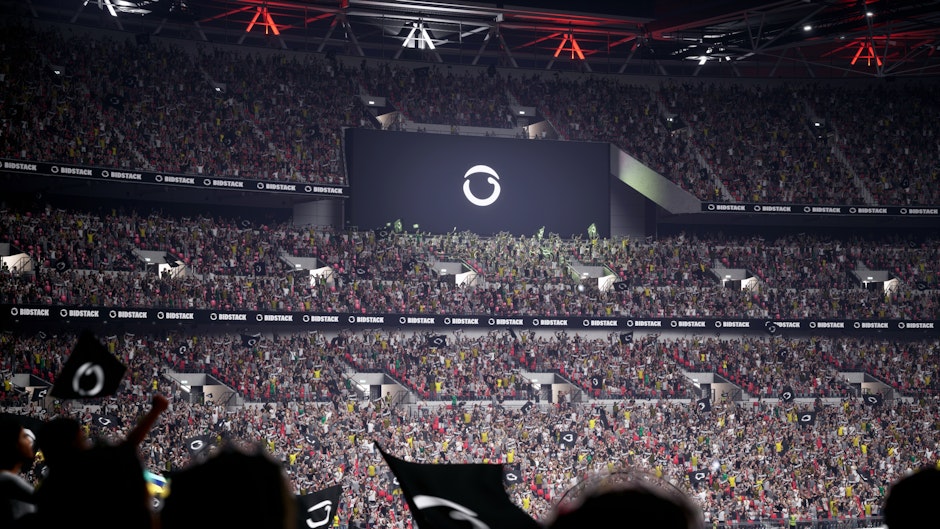Why virtual stadiums are a testing ground for the next phase of sports sponsorship
After a truly grueling year for consumers and advertisers alike, Super Bowl LVII followed hot on the heels of the first-ever winter FIFA World Cup to offer some much-needed respite

If the status of sports-related advertising was ever in doubt, this was a reminder of its unrivaled power. Incredibly, the second most-searched Google term in the US during the Super Bowl was “who owns Blue Moon beer?” after Molson Coors hopped in to profit from Anheuser Busch relinquishing its decades-long exclusivity. Meticulous media planning and inspired creatives are usually the name of the game when it comes to delivering this sort of impact. But what happens when the best-laid media plans go awry in the sporting arena, and could developments in virtual worlds offer clues to some future solutions?
Advertising fumbles
You don’t need to look too far for some notable examples of sponsorship struggles. A female colleague distinctly remembers feeling pretty disillusioned at a Women’s European Championships game in Brighton, where billboards for a well-known cleaning product dominated the stadium branding. Last year, the captain of Australia’s test cricket side refused to be part of promotional material for Alinta Energy, the organization’s biggest sponsor, due to concerns about its environmental impact.
On the brand side, Budweiser was blindsided by the World Cup delivery group’s last-minute decision to limit alcohol sales in and around the stadiums. When it comes to sports and sporting events, surprises abound. While Budweiser was able to mount the mother of all comebacks, not every brand will be able to convert third-and-long into a touchdown. Imagine, then, if ad creative could be dynamically adjusted or switched out in the blink of an eye or, even better, tweaked to suit individual spectators. After all, each of us experiences ads differently. The same brand that my colleague felt so strongly about at the Women’s Euros produced one of The Drum’s favorite ads of the tournament.
A two-way opportunity
While this level of control and granularity may be some way off ‘IRL’ (though probably not as far as we think), it’s already becoming a reality in virtual spaces such as video games. Technological leaps are enabling brands and sporting organisations, such as franchises, to update their digital presence in real-time. Bidstack recently set up a dedicated sports division to power this exact opportunity - creating a two-way mirror between digital and physical stadiums for the first time.
The possibilities are frankly endless and almost completely untapped. As well as being able to extend real-world sponsorships to the virtual world, we’re talking about a data play that enables sports rights holders such as a Premier League club to understand who’s playing as their team in-game, and targeting them with bespoke messages and offers such as a 25% discount on merchandise when they win a tournament within the game. Yes, really. Or what if Nike could not only communicate with players who wear their boots in-game but learn from the designs and color schemes that resonate most to inform their product development?
Bidstack is firmly embedded in the world of sports sponsorship, and we know the boon these advances could offer for brands, rights holders, and video game publishers. We’ve worked with Sports Interactive’s Football Manager since 2017, and are the current sponsor and fan engagement partner of Norwich City FC’s esports org. Our new dedicated division, Bidstack Sports, is driven by Alex Nunez, who partnered with Pizza Hut to create the world’s first virtual stadium rights deal, inside Madden NFL 20. While creating synergies between physical and digital content sounds pretty straightforward, the opportunity to mimic the realism of sporting venues (and drive revenue from this) has historically been distinctly limited for publishers of sports games. In-game activations are typically hard-coded into the very fabric of the game rather than a wax-on, wax-off proposition, making changing them just as expensive and time-consuming as physical out-of-home advertising.
Unparalleled parallels
As the portal between brands and publishers, digital and physical, opens wider, we’ll not only see challenges solved, but new opportunities emerge that we haven’t even considered yet. Sign a new commercial deal mid-season? No problem. Move your franchise to a new city (unthinkable in British sport, I know)? Easy enough to switch up the branding. Form a new European Super League and dozens of commercial partners? Okay, I’ll stop. But the rapidly accelerating flexibility of advertising, sponsorship and fan communications in virtual worlds may offer not only unparalleled opportunities to tailor the digital to our physical sporting realities but also provide some inspiration to take back to the real world too.

